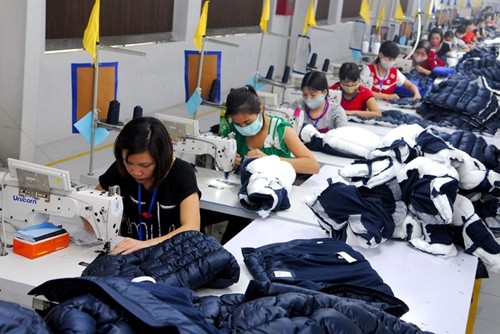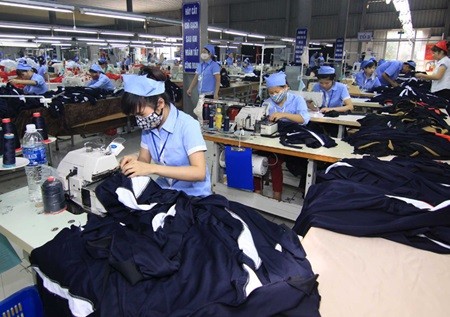(VOVworld) – Vietnam is about to sign some important trade deals including the Trans Pacific Partnership, the EU-Vietnam Trade Agreement, the Vietnam-Korea Free Trade Agreement, and has already signed an economic agreement with the Eurasian Economic Union. To gain the maximum benefit from these deals, Vietnam’s garments and textiles sector has put forward plans to grasp the opportunity and maintain its current growth rate.
 |
| Vinatex earned 1.7 billion USD from exports in the first half of this year. (Photo: Danh Lam/VNA) |
Since the beginning of this year, Vietnam has earned 12.8 billion USD from exporting garments and textiles, one of its spearhead economic sectors.
The industry will have even greater opportunities when Vietnam signs pending trade deals like the EU-Vietnam Free Trade Agreement because the EU is one of the sector’s crucial markets.
When the Trans Pacific Partnership agreement is signed and delivers a gradual reduction of tariffs, Vietnamese exporters can increase their market share in the US, Vietnam’s top garments and textiles importer at the moment.
The free trade agreement with the Eurasian Economic Union, which was signed in late May and has already taken effect, could help Vietnam increase the export value of its garment products by 50% in the first year and 20% annually in succeeding years.
 |
The US and EU remain the top export markets for Vietnamese garments and textiles businesses.
(Photo: Vu Sinh/ VNA) |
Nguyen Minh Hoa, a representative of the DHA Garment Export Company, told VOV that the company “has enlisted many steps such as studying products relevant to different markets and choose channels to buy raw materials for items that meet the standards of quality and origin.”
Le Tien Truong, Director General of the Vietnam National Textile and Garment Group, said finding new markets will allow businesses to increase export revenues and market share, strengthen their position in traditional markets, and be more likely to achieve the 28.5 billion USD target set for this year.
Truong clarified the industry’s prospects ahead of the free trade deal with the Eurasian Economic Union: “the Eurasian Economic Union imports goods worth 13 billion USD a year. Last year Vietnam earned only 320 million USD from selling its garments and textiles to the EEU, accounting for just 2%. If the agreement’s benefits of reduced tariffs and simpler customs procedures are maximized, Vietnam can increase its market share there to 10% in the next 5 years.”
Along with the top of opportunities have come challenges - an increase in compulsory rules and required trade, services, investment, and intellectual property commitments. Dang Kim Dung, Secretary General of the Vietnam Garments and Textiles Association, suggested a way to overcome obstacles and prepare for the integration:
“We call on domestic and foreign enterprises to identify weak elements and strengthen internal chain links among garment companies and material manufacturers to make the most of each other’s products. This will allow us to meet the origin requirements of FTAs and the Trans Pacific Partnership Agreement.”
To take full advantage of the trade deals, garment enterprises should invest in technology and improve designs, patterns, and quality to gain a firm foothold in the international market.
Vinatex earned $1.7 billion from exports in the first six months of this year. (Photo: Danh Lam/VNA/VNS)
At present, the US and EU remain the top export markets for Vietnamese garments and textile businesses. — VNA/VNS Photo Vu Sinh